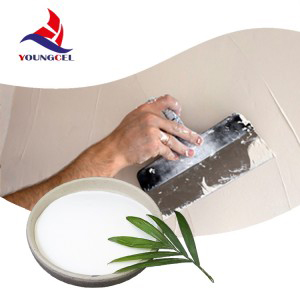1. What are the main uses of hydroxypropyl methylcellulose (HPMC)?
HPMC is widely used in construction materials, coatings, synthetic resins, ceramics, pharmaceuticals, food, textile, agriculture, cosmetics, tobacco and other industries. HPMC can be divided into construction grade, food grade and pharmaceutical grade according to its usage. Currently, most Chinese domestic production is at the construction level. At the construction level, putty powder is used in large quantities, about 90% for putty powder and the other for cement mortar and tile adhesive
2. What are the causes of blistering in putty powder during the application of HPMC in putty powder?
HPMC acts as a thickener, water retainer and builder in putty powders. It is not involved in any reaction.
Causes of blistering: 1. Too much water. 2. The bottom layer is not dry, just scrape a layer on the top layer, which is also easily blistered.

HPMC
3. How many types of hydroxypropyl methylcellulose (HPMC) are there? What is the difference between them?
HPMC can be divided into instant and hot soluble. Instantly soluble products, dissipate quickly and disappear into the water in cold water. At this point, the liquid has no viscosity as the HPMC is simply dispersed in the water and does not dissolve. After about 2 minutes, the viscosity of the liquid gradually increases, forming a clear viscous gel. The hot soluble product can disperse rapidly in hot water and disappears in the hot water. As the temperature drops to a certain temperature, the viscosity gradually appears until a clear viscous gel is formed.
The hot melt type can only be used in putty powders and mortars. In liquid glues and paints, caking occurs and cannot be used. The instant type has a wide range of applications and can be used in putty powders and mortars as well as in liquid glues and paints.
4. How can the quality of hydroxypropyl methylcellulose (HPMC) be determined easily and visually?
(1) Specific gravity: The higher the specific gravity, the better the quality.
(2) Whiteness: Most quality products have a good whiteness. Except for those with added whitening agents. Whitening agents can affect the quality.
(3) Fineness: The finer the fineness, the better the quality. The fineness of our HPMC is usually 80 mesh and 100 mesh, 120 mesh is also available.
(4) Transmittance: Put HPMC into water to form a transparent gel and observe its transmittance. The greater the transmittance, the less insoluble material. Vertical reactors usually have better transmittance and horizontal reactors have poor transmittance, but this does not mean that the production quality of vertical reactors is better than that of other production methods. There are many factors that determine the quality of the product in horizontal reactors, which have a high hydroxypropyl content and a high hydroxypropyl content, which is best for water retention.
Post time: Apr-20-2021



